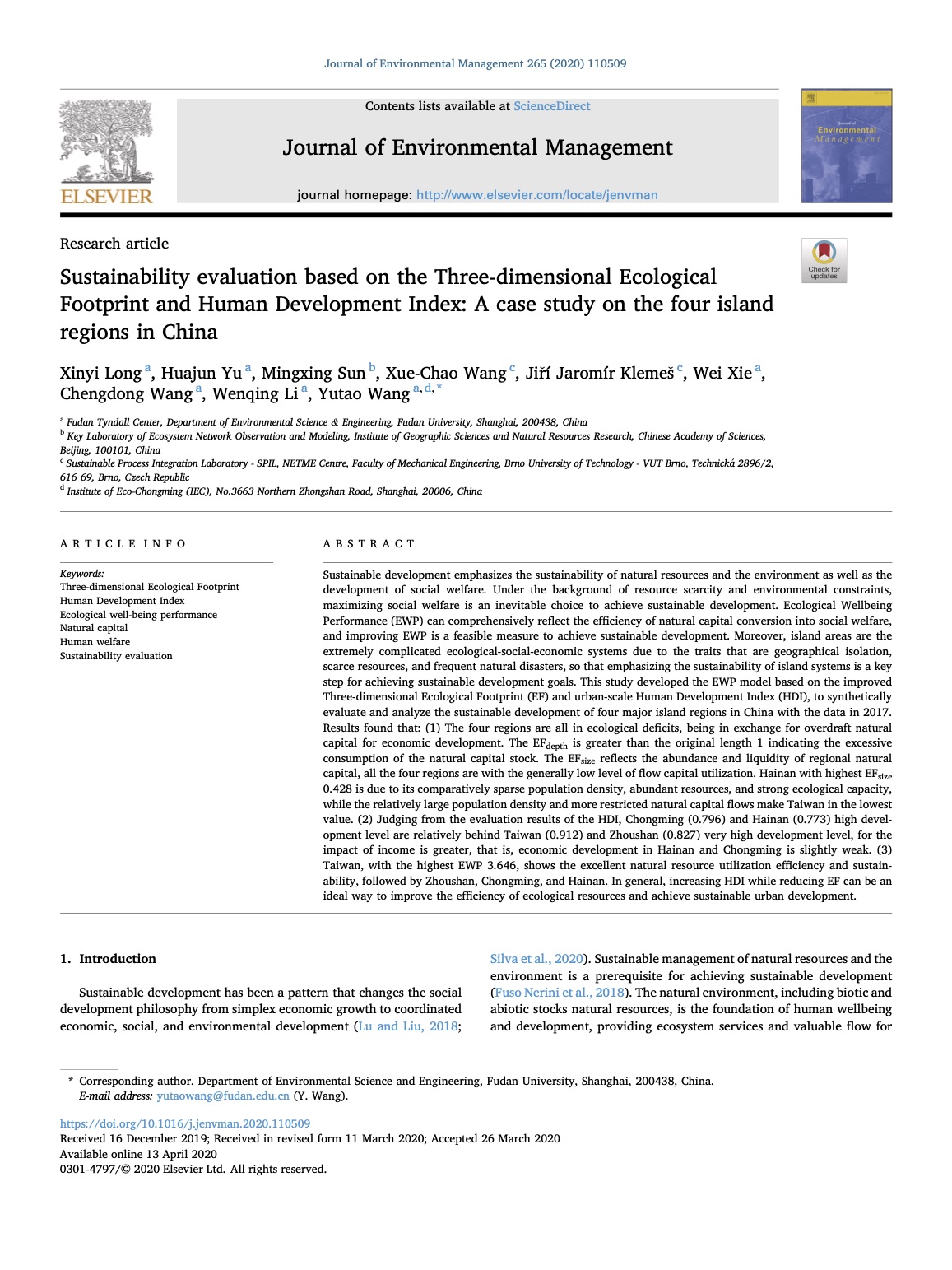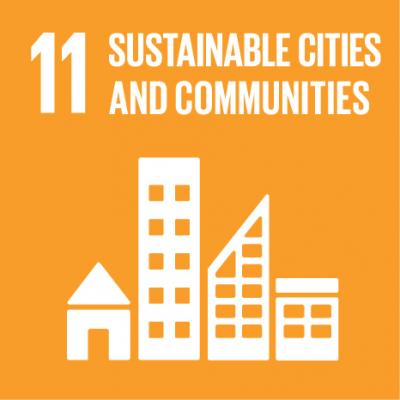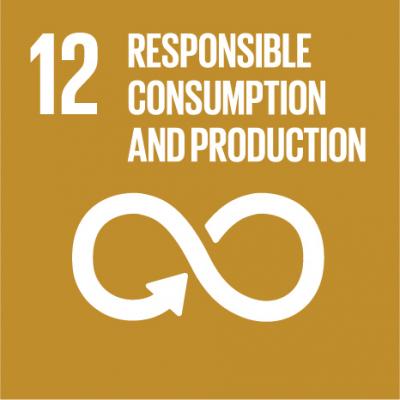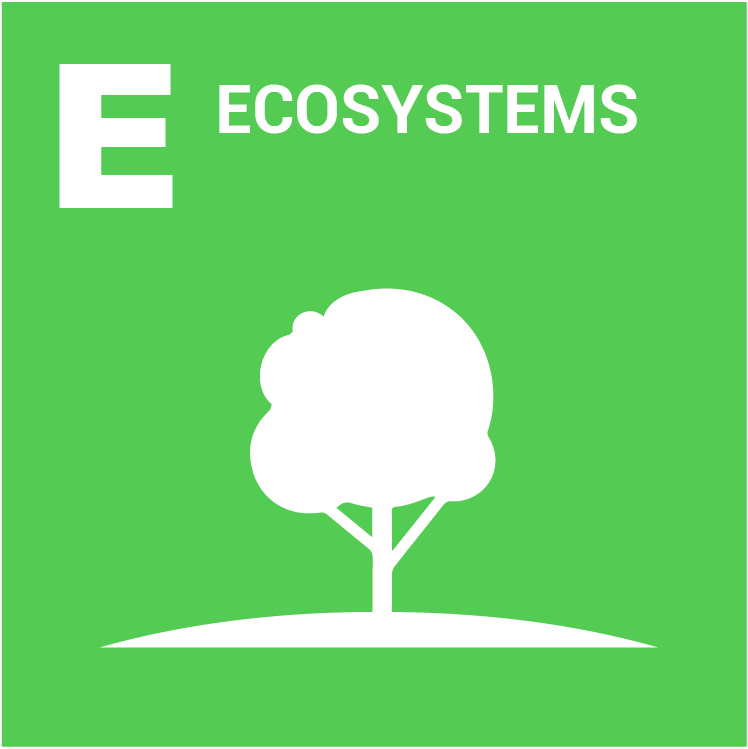Sustainable development emphasizes the sustainability of natural resources and the environment as well as the development of social welfare. Under the background of resource scarcity and environmental constraints, maximizing social welfare is an inevitable choice to achieve sustainable development. Ecological Wellbeing Performance (EWP) can comprehensively reflect the efficiency of natural capital conversion into social welfare, and improving EWP is a feasible measure to achieve sustainable development. Moreover, island areas are the extremely complicated ecological-social-economic systems due to the traits that are geographical isolation, scarce resources, and frequent natural disasters, so that emphasizing the sustainability of island systems is a key step for achieving sustainable development goals.
This study developed the EWP model based on the improved Three-dimensional Ecological Footprint (EF) and urban-scale Human Development Index (HDI), to synthetically evaluate and analyze the sustainable development of four major island regions in China with the data in 2017. Results found that: (1) The four regions are all in ecological deficits, being in exchange for overdraft natural capital for economic development. The EFdepth is greater than the original length 1 indicating the excessive consumption of the natural capital stock. The EFsize reflects the abundance and liquidity of regional natural capital, all the four regions are with the generally low level of flow capital utilization. Hainan with highest EFsize 0.428 is due to its comparatively sparse population density, abundant resources, and strong ecological capacity, while the relatively large population density and more restricted natural capital flows make Taiwan in the lowest value. (2) Judging from the evaluation results of the HDI, Chongming (0.796) and Hainan (0.773) high development level are relatively behind Taiwan (0.912) and Zhoushan (0.827) very high development level, for the impact of income is greater, that is, economic development in Hainan and Chongming is slightly weak. (3) Taiwan, with the highest EWP 3.646, shows the excellent natural resource utilization efficiency and sustainability, followed by Zhoushan, Chongming, and Hainan. In general, increasing HDI while reducing EF can be an ideal way to improve the efficiency of ecological resources and achieve sustainable urban development.
Keywords: Three-dimensional Ecological Footprint, Human Development Index, Ecological well-being performance, Natural capital, Human welfare, Sustainability evaluation
Corresponding author: Yutao Wang, yutaowang@fudan.edu.cn







